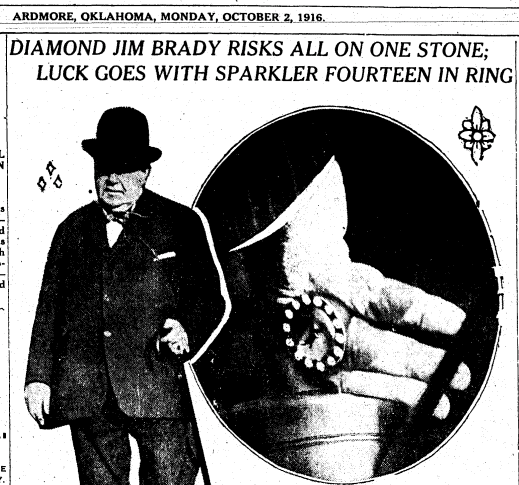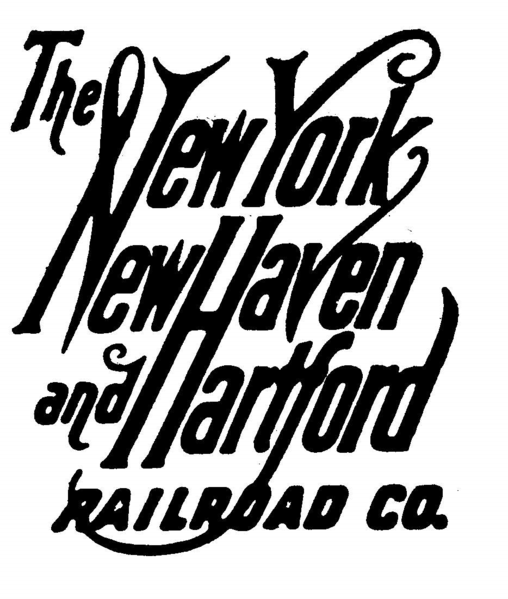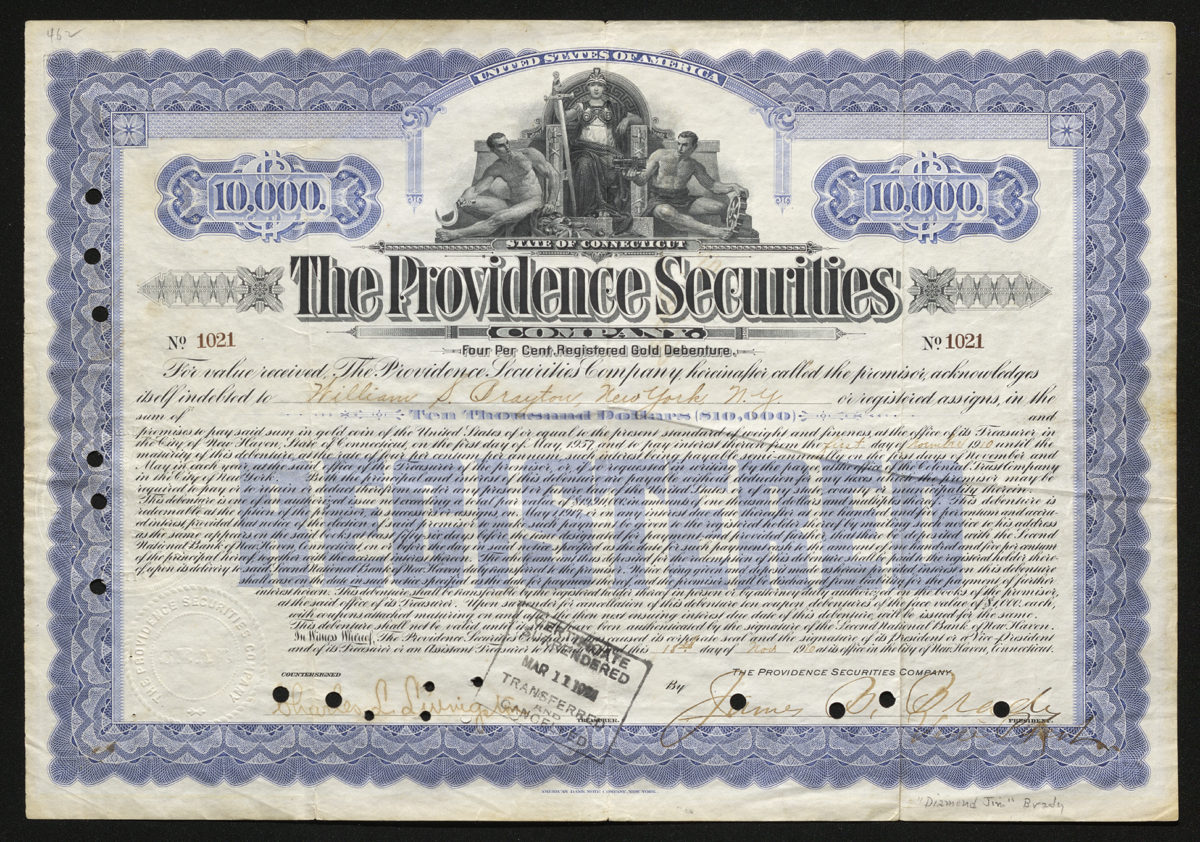
Diamond Jim Brady: Flamboyance, Charisma, and Gluttony
“Diamond” Jim Brady was known for often flashing an extraordinary amount of diamonds. He owned $2 million worth of jewelry—the equivalent of closer to $50-$60 million today—including over twenty thousand diamonds and six thousand other precious stones. He was also known for his extremely large appetite. Although he was seen as a controversial businessman, he is remembered for donating large sums to hospitals including Johns Hopkins.
Header Image: Illustration from a newspaper article; courtesy Salt Lake City Tribune via Newspaper Archive [1].
“Diamond Jim Brady was famous for three things: making millions selling railroad supplies, wearing oodles of sparkling jewelry, and consuming enormous quantities of food.”

Logo for the New York, New Haven and Hartford Railroad Co.; courtesy Wikipedia Commons
This debenture certificate, similar to a bond, was owned by William Stanton Brayton, the son of Charles Brayton who was one of a group of ten investors who owned a majority stake in the Providence Securities Company. The company procured trolley lines and other investments and was owned by the New York, New Haven & Hartford Railroad Company (referred to in short as the “New Haven”). This certificate has been signed by the company’s president, James B. Brady—more commonly known by the moniker Diamond Jim Brady.
Diamond Jim was one of the more flamboyant and well-known characters of the Gilded Age. Beginning his career as a bellboy at the age of eleven, he quickly worked his way up the ranks and became a salesman for railroad supply companies. By the age of thirty, the gregarious and charismatic figure was earning around one million dollars a year in sales commissions.
Diamonds were a status symbol of the era, and Brady took the fashion to a whole new level. He owned $2 million worth of jewelry—the equivalent of closer to $50-$60 million today—including over twenty thousand diamonds and six thousand other precious stones. Brady was also famous for his gluttonous appetites; after his death, legend had it that his stomach had stretched to six times its normal size. While some of his business dealings were questionable, he is remembered as a generous figure and philanthropist who donated money to hospitals, including Johns Hopkins Hospital.
Diamond Jim Brady served as president of the Providence Securities Company in name only. He was, in fact, fronting for railroad magnate Charles Mellen as part of a symbiotic business relationship between the two men. Louis Brandeis—a lawyer who later served as the first Jewish Supreme Court Justice—directly implicated Mellen in the financial collapse of the intertwined New Haven Railroad and Providence Securities companies.
In 1907, the Providence Securities Company had issued $19,898,000 in debentures like this one, and the Financial Panic of 1907 likely contributed to the company’s rapid accumulation of debt. By 1912, the company’s holdings of outstanding securities had more than quadrupled from $93 million in 1903 to $417,000,000. As author William Z. Ripley comments, “A tale of more reckless disregard of the interest of the public and of investors alike—a more complete breakdown of service in the form of intolerable losses and delays and appalling accidents—has never been spread upon the records.” The Great Depression ultimately drove the New Haven into bankruptcy in 1935.
Despite these financial difficulties, this certificate printed by the American Bank Note Company—one of the most prolific producers of stock and bond certificates in American history—was beautifully designed. The vignette at the top features an armored woman representing Justice, holding a sword which symbolizes the power of the state. The throne she sits on is decorated with two faces, which are symbols of the law. Justice is flanked by two male figures: at left, one holds a sickle and a bushel of produce, representing agriculture; at right, the other holds a locomotive and a cogwheel, representing manufacturing and technology. The locomotive is also a direct reference to the Providence Securities Company’s involvement in the railroad industry. One of the embossed markings near the bottom left of the certificate also shows the image of the locomotive in the New Haven’s seal.
 University of Nevada, Reno
University of Nevada, Reno
